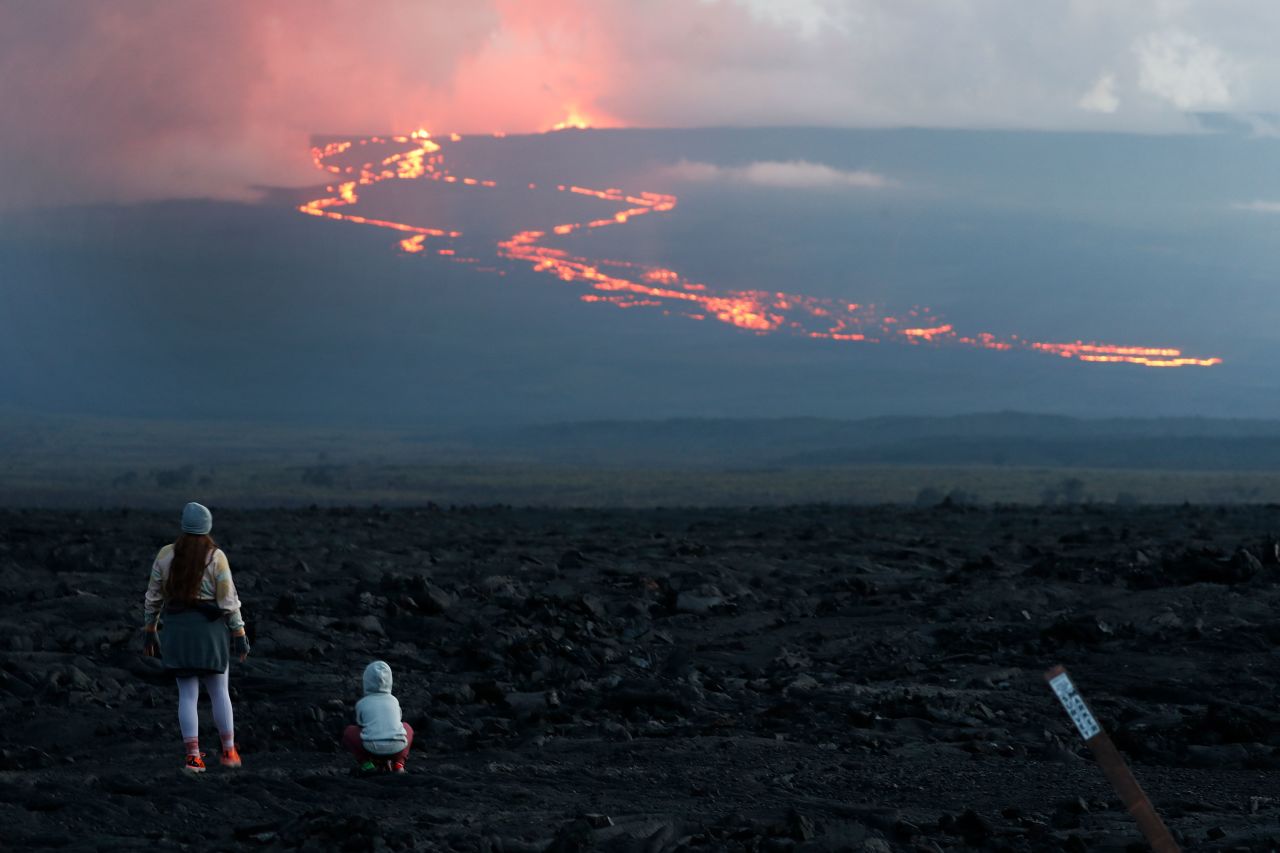
After 38 years, Mauna Loa, the largest active volcano in the world, erupted, engulfing Hawaii’s Big Island in ash and debris.
Mauna Loa
- One of the five volcanoes that collectively make up Hawaii’s Big Island is Mauna Loa (biggest being the Mauna Kea).
- The Hawaiian archipelago’s southernmost island is this one.
- Although it is the largest and accounts for roughly half of the island’s land mass, it is not the tallest (that distinction belongs to).
- The Kilauea volcano, which is currently erupting from its summit crater, is located directly to its immediate north.
Volcano eruption
- The Earth becomes hotter as one descends further into the interior, near its core.
- The geothermal gradient, which measures how much the temperature rises with depth on Earth, shows that heat is moving from the planet’s warm interior to the surface.
- At a certain depth, the heat is intense enough to melt rocks and produce “magma,” as it is known to geologists.
- Because magma is lighter than solid rock, it rises and gathers in magma chambers.
- Between six and 10 kilometres below the surface, there are chambers that could potentially lead to volcanic eruptions.
- Magma pushes its way up via fractures and cracks in the Earth’s crust as it accumulates in these chambers. We refer to this as a volcanic eruption.
- The magma that surfaces on the Earth’s crust is referred to as lava.
Explosive eruption of Mauna Loa
- The magma’s composition affects the explosiveness and intensity of eruptions.
- Simply said, less explosive and often less deadly volcanic explosions result from runny magma.
- Because the magma is runny, gases can escape and cause a constant, comparatively mild flow of lava to flow out of the volcano’s mouth.
- This type of eruption is occurring at Mauna Loa. People usually have enough time to get away from the lava because it comes out slowly. Depending on the inclination and precise consistency of the lava, geologists can also forecast how it will flow.
How is vulcanism measured?
- A scale called the Volcanic Explosivity Index (VEI) is used to gauge a volcano’s explosivity.
- It ranges from 1 to 8, with a higher VEI signifying greater explosivity.
- Although the VEI of the present Mauna Loa eruption is unknown, it was determined that the previous eruption in 1984 had a VEI of 0.
